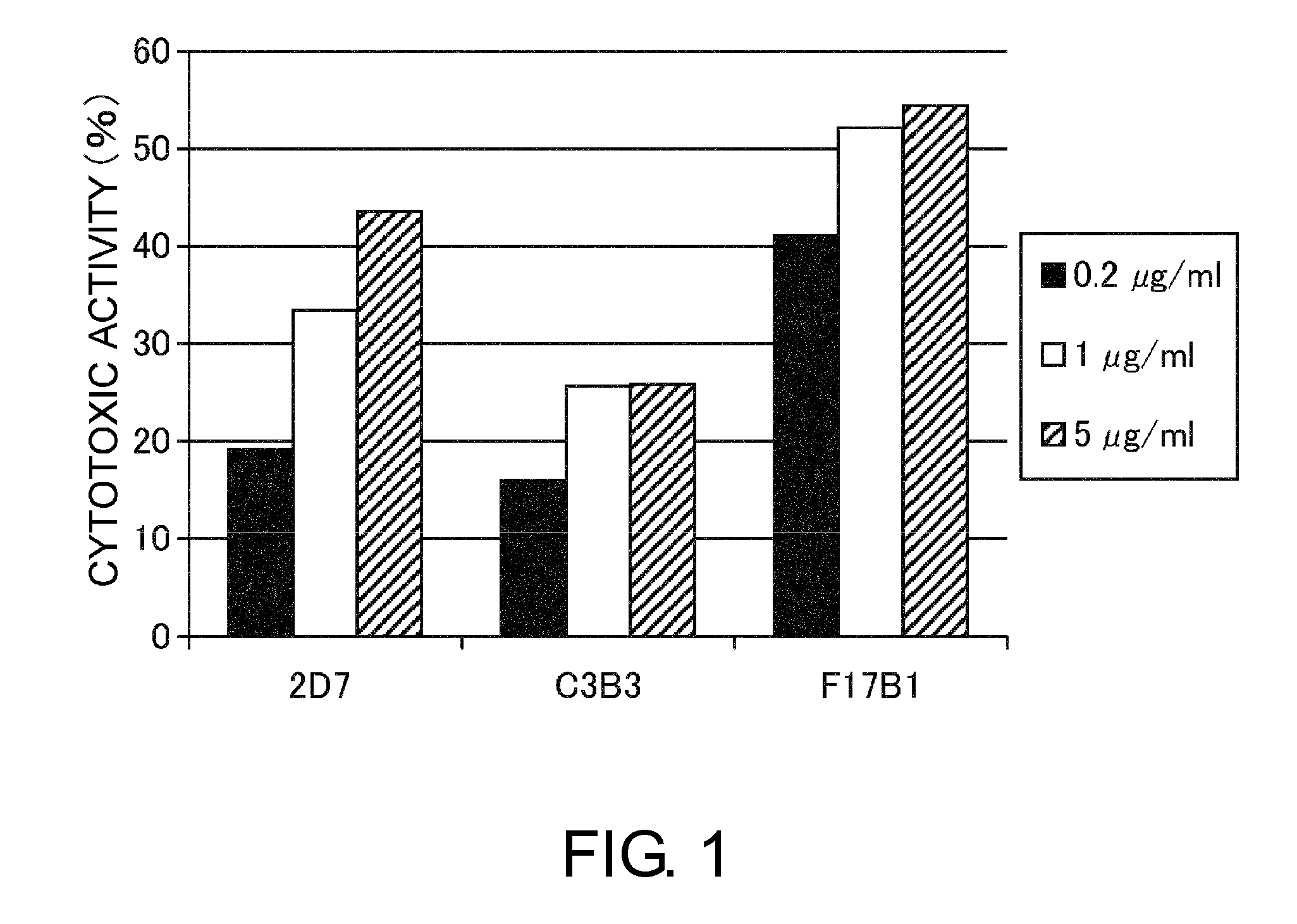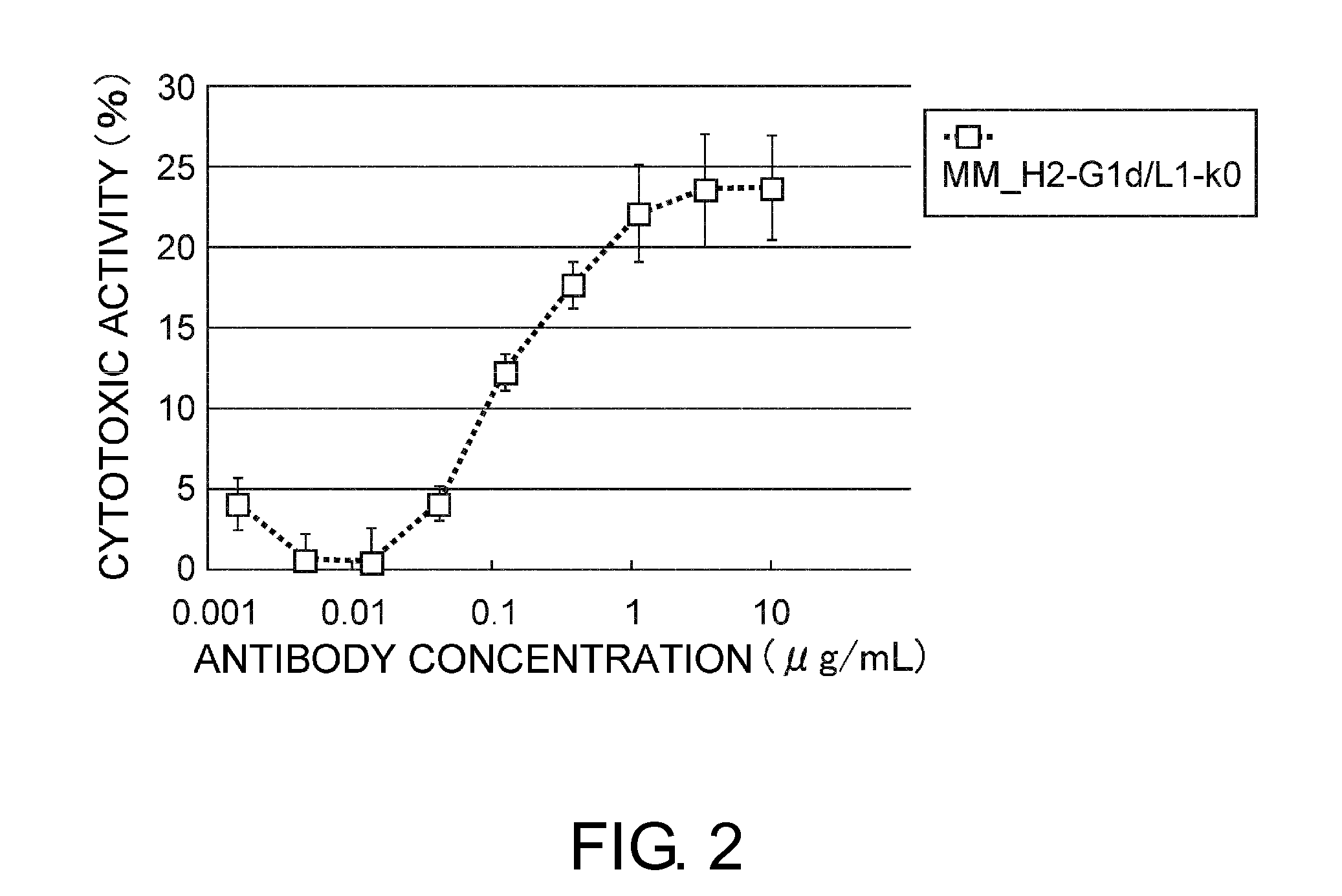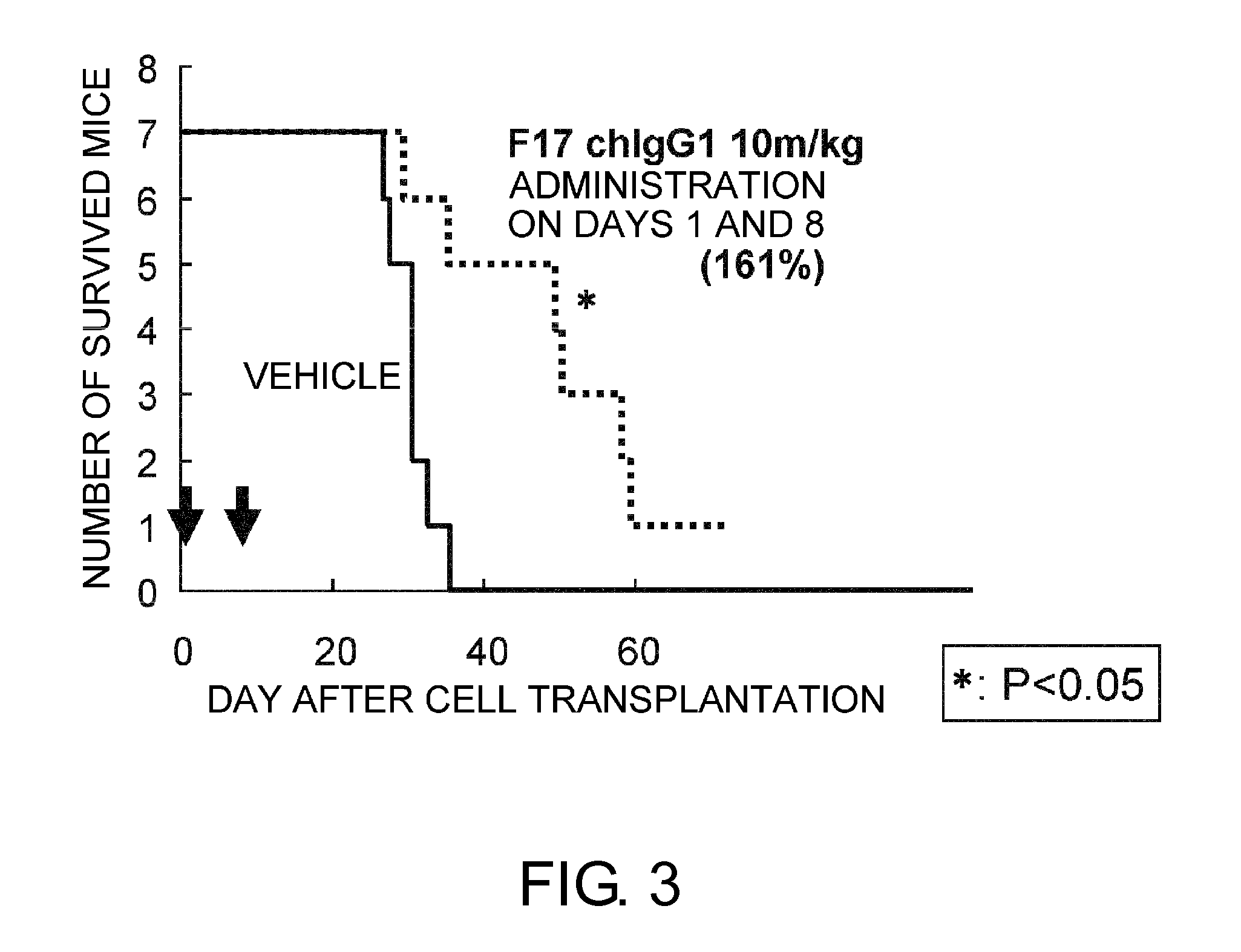Antibody capable of recognizing HLA class i
a technology of antibodies and antibodies, applied in the field of antibodies capable of recognizing hla class i, can solve the problems of quick induction of cell death in human myeloma cells, and achieve the effect of prolonging the survival period of the mouse model and suppressing the cell growth of the im9 cell lin
- Summary
- Abstract
- Description
- Claims
- Application Information
AI Technical Summary
Benefits of technology
Problems solved by technology
Method used
Image
Examples
example 1
Preparation of Mouse anti-HLA class I Antibodies
Hybridoma Preparation
[0123]1.1. Preparation of Soluble HLA-A-FLAG (sHLA-A-flag) as Immunogen
1.1.1. Construction of an sHLA-A-flag Expression Vector and Establishment of an sHLA-A-flag-Producing CHO Line
[0124]sHLA-A-flag (SEQ ID NO: 1, a FLAG tag is located at positions 307 to 314), in which the flag tag is attached to the C terminus of the extracellular domain of HLA-A6802 (GenBank No. AM235885), was inserted into an animal cell expression vector. The nucleotide sequence was determined by a DNA sequencer, ABI PRISM 3700 DNA Sequencer (Applied Biosystems) using a BigDye Terminator Cycle Sequencing Kit (Applied Biosystems) according to the method described in the appended instruction manual. The constructed expression vector was introduced into CHO cells to establish an sHLA-A-flag-producing CHO line.
1.1.2. Purification of sHLA-A-flag
[0125]Using Q-Sepharose FF (GE Healthcare), ANTI-FLAG M2 Affinity Gel (SIGMA), and HiLoad 16 / 60 Superdex ...
example 2
Comparison of the Cytotoxic Activity of the F17B1, 2D7, and C3B3 Antibodies
[0129]The F17B1 antibody prepared as described in Example 1, and the 2D7 and C3B3 antibodies, which recognize HLA class I, were added to ARH77 cells at 0.2, 1, or 5 μg / ml. After the addition of antibodies, the cells were incubated at 37° C. for four to five hours. Then, the cells were stained with PI, and the proportion of nonviable cells was determined by FACS analysis (FIG. 1).
example 3
Determination of the Variable Regions of the Mouse anti-HLA class I Antibody F17B1
[0130]Total RNA was extracted from hybridomas using RNeasy Mini Kits (QIAGEN), and cDNA was synthesized using a SMART RACE cDNA Amplification Kit (BD Biosciences). Using PCR on the prepared cDNA, antibody variable region genes were inserted into cloning vectors. The nucleotide sequence of each DNA fragment was determined by a DNA sequencer, ABI PRISM 3700 DNA Sequencer (Applied Biosystems) using a BigDye Terminator Cycle Sequencing Kit (Applied Biosystems) according to the method described in the appended instruction manual. The determined H chain and L chain variable regions of the mouse F17B1 antibody are shown in SEQ ID NOs: 2 and 3, respectively. The CDRs and FRs were determined according to Kabat numbering.
PUM
| Property | Measurement | Unit |
|---|---|---|
| weight | aaaaa | aaaaa |
| weight | aaaaa | aaaaa |
| concentration | aaaaa | aaaaa |
Abstract
Description
Claims
Application Information
 Login to View More
Login to View More - R&D
- Intellectual Property
- Life Sciences
- Materials
- Tech Scout
- Unparalleled Data Quality
- Higher Quality Content
- 60% Fewer Hallucinations
Browse by: Latest US Patents, China's latest patents, Technical Efficacy Thesaurus, Application Domain, Technology Topic, Popular Technical Reports.
© 2025 PatSnap. All rights reserved.Legal|Privacy policy|Modern Slavery Act Transparency Statement|Sitemap|About US| Contact US: help@patsnap.com



